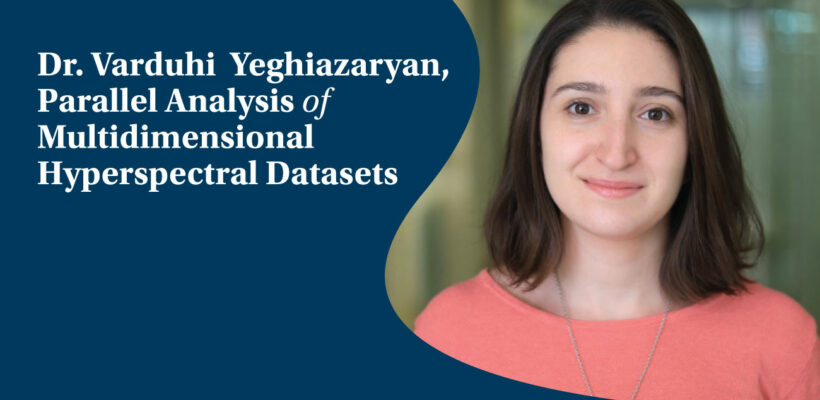
Afeyan Research Grant Recipient: Varduhi Yeghiazaryan
3 min readYEREVAN, Armenia — The American University of Armenia (AUA) is pleased to announce the three recipients of a one-year research grant, which was made possible thanks to a generous donation by the Afeyan Family Foundation. The University is grateful to the Afeyan Family Foundation for supporting these research activities, selected to bring positive impact to Armenian research and development.
The supported projects are in three disciplines that have been deemed priorities for the development of Armenia, namely economics, law, and medicine. AUA will continue to support faculty research through internal seed funding for the continuation of these projects beyond the first year, as well as to promote similar research among other faculty members.
The research awards were announced on July 18, 2023, with immediate start dates. They are expected to be conducted during the academic year 2023-24, with each principal investigator delivering a mid-year status report as well as a final report upon completion of the project by August 30, 2024.
In a series of three articles, beginning with this one, we will profile each of the principal investigators’ projects. In this third article, we will focus on the research Dr. Varduhi Yeghiazaryan is conducting with the grant she has received from the Afeyan Family Foundation.
An assistant professor in the Zaven P. and Sonia Akian College of Science and Engineering, Dr. Yeghiazaryan — together with her co-principal investigator, CSE Lecturer Aram Butavyan — received a grant to lead a research project titled “Fully Automated GPU-based Parallel Analysis of Pre-Clinical Multidimensional Hyperspectral Datasets.”
Dr. Yeghiazaryan’s team aims to design and implement a graphics-processing-unit-accelerated, deep-learning-based procedure for fully automated parallel segmentation and pixel-level classification of hyperspectral images of atrial tissue undergoing radiofrequency ablation procedure, incorporating spatio-spectral information from the original image and segmentation output.
Dr. Yeghiazaryan was interviewed by AUA Communications Specialist Serena Hajjar Bakunts to obtain a first-hand account of her project:
- What inspired your research project?
In recent decades, hyperspectral imaging (HSI) techniques have been actively utilized in a wide range of fields, from satellite imaging to agriculture and food processing to medicine. A number of recent studies, including by the members of our team, indicate the great potential of HSI in revealing otherwise invisible surgical targets. However, the high dimensionality and resolution of HSI data makes automated processing and analysis of such data difficult or intractable. Our aim is to design and implement a graphics-processing-unit-accelerated, deep-learning-based procedure for fully automated parallel segmentation and pixel-level classification of hyperspectral images of atrial tissue undergoing radiofrequency ablation procedure, incorporating spatio-spectral information from the original image and segmentation output. We hope that these studies will lead to the development of new approaches for clinical applications that can benefit society at large.
- Are students engaged in your project? If so, how many and in what capacity?
The involvement of recent AUA graduates and current students in our research project was one of our priorities. Our team includes Yeva Gabrielyan (BSCS ’19 and MSCIS ’22) as a research associate, along with Sona Bezirganyan (BSCS ’22), Lusine Davtyan (BSCS ’22), and Arpi Hunanyan (BSDS ’22 and MSCIS ’24) as research assistants. They are involved in replicating state-of-the-art models and testing the proposed hypotheses on a weekly basis.
- Where does your research process currently stand?
Last October, our initial findings were presented during the BIO-SEE (Biomedical Imaging Organization for South East Europe) annual meeting at the L.A. Orbeli Institute of Physiology. Arpi Hunanyan (MSCIS ’24) presented a poster on behalf of our team titled “Hyperspectral Image Classification of Ablated Cardiac Tissue using Deep Learning.” The aim of the study was to test the applicability of several state-of-the-art hyperspectral image classification methods to separate ablated regions in excised left atrial tissue of large animals. Hunanyan’s poster presentation generated significant interest from attendants, which prompted active follow-up discussions. Now, we are in a phase of active coding and experimentation to produce qualitative and quantitative results and to later prepare them for publication.
- How do you see your research benefitting Armenia’s development?
These studies will cultivate and enhance AUA’s long-term research capacity, as well as foster space for collaboration with external research institutions and medical practitioners. It can boost the opportunities to involve more local and international resources to conduct research in Armenia. We hope to contribute to the further development of interdisciplinary research capacity and practices both within AUA and nationally.
Founded in 1991, the American University of Armenia (AUA) is a private, independent university located in Yerevan, Armenia, affiliated with the University of California, and accredited by the WASC Senior College and University Commission in the United States. AUA provides local and international students with Western-style education through top-quality undergraduate and graduate degree and certificate programs, promotes research and innovation, encourages civic engagement and community service, and fosters democratic values.
